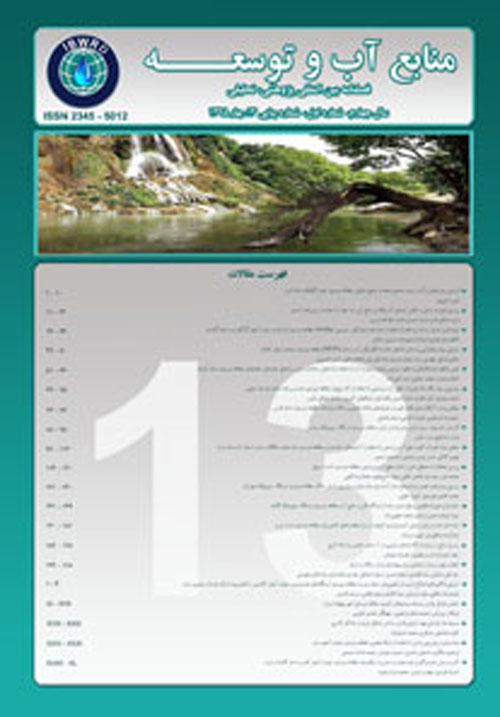Simulation of Land use Change Scenarios (Increases in Residential Areas) Impacts on Hydrological Parameters Using WetSpa Model in the Ziarat Gorgan Watershed
Author(s):
Abstract:
Land-use changes by human activities are important issues in regional planning. The distributed hydrologic model is a suitable model to survey land-use changes and to estimate their quantities. This study aims to evaluate the effects of land-use changes (the expansion of residential areas) on the hydrological parameters using WetSpa model in the Ziarat Watershed, which has an area of 95.15 square kilometers. In order to execute the model, during the four-year period (2007-2010), the hourly hydrometeorology data including rainfall, temperature, evapotranspiration, and discharge rate are used as inputs. Additionally, three base maps of the digital elevation model (30meter cell size), soil map (soil texture), and land-use are also applied. As a result, there is a good agreement between the simulated and observed hydrographs. The scenarios of land-use changes (the expansion of residential area) have been used as input maps for the calibrated model in a GIS environment. The results show that some hydrological parameters such as the peak discharge, potential runoff coefficient and flow velocity increase in the all scenarios, but the Mannings roughness coefficientis reduced.
Keywords:
hydrological model , WetSpa , Simulation , Land , use changes , GIS , Ziarat , Gorgan
Language:
Persian
Published:
International Bulletin of Water Resources and Development, Volume:4 Issue: 1, 2016
Pages:
143 to 156
https://www.magiran.com/p1549644
سامانه نویسندگان
مقالات دیگری از این نویسنده (گان)
-
Direct-tangible costs in flood zones simulated using the HEC-RAS 2-D hydraulic model – the Arazkuseh River, Golestan Province
Shahnaz Mirzaei, Amir Sadoddin *, , Majid Ownegh, Raoof Mostafazadeh
Journal of Water and Soil Management and Modeling, -
Investigation of the trend of climatic events in Hablehroud watershed using RClimDex software (statistical period 1986 to 2017)
Mahin Naderi *, Vahedberdi Sheikh, , Bairam Komaki, Ghanghermeh Ghanghermeh
Journal of Climate Research,



